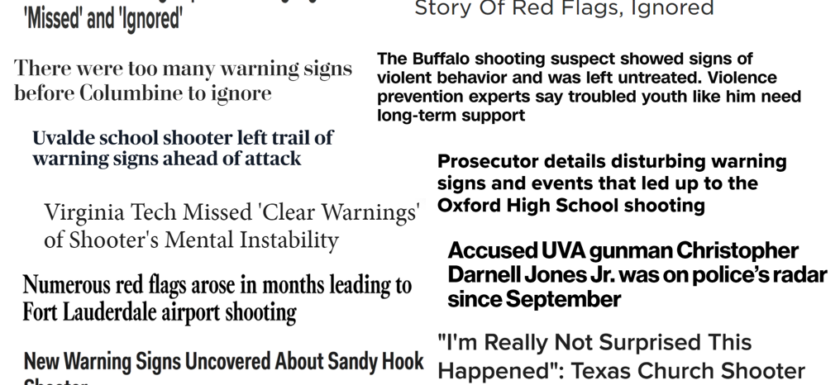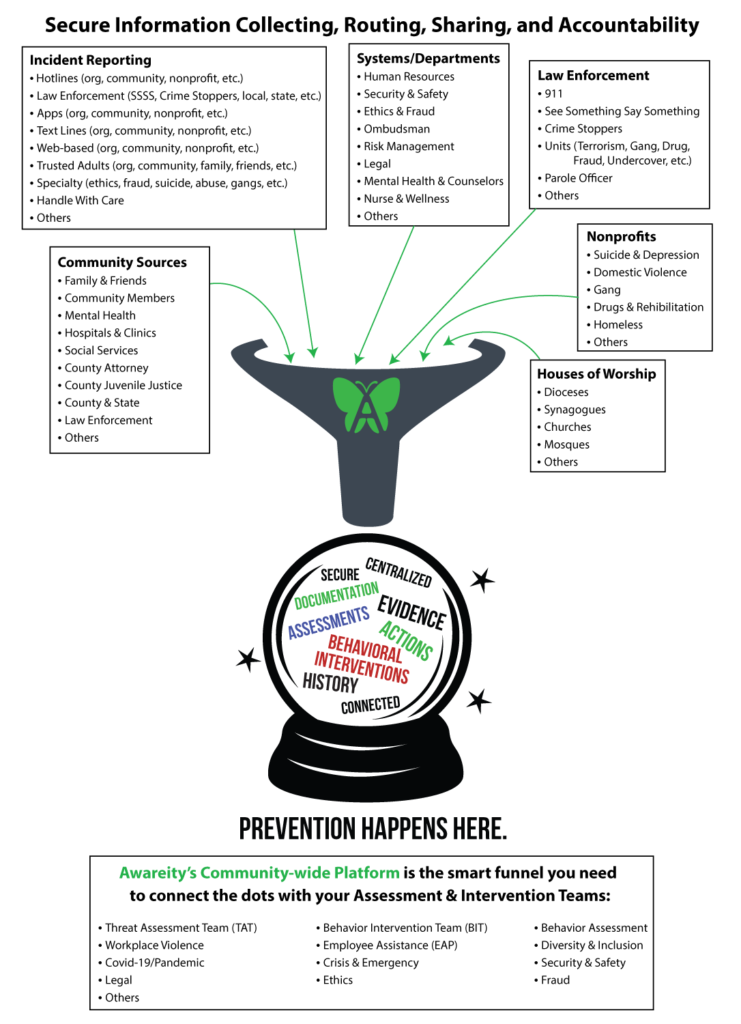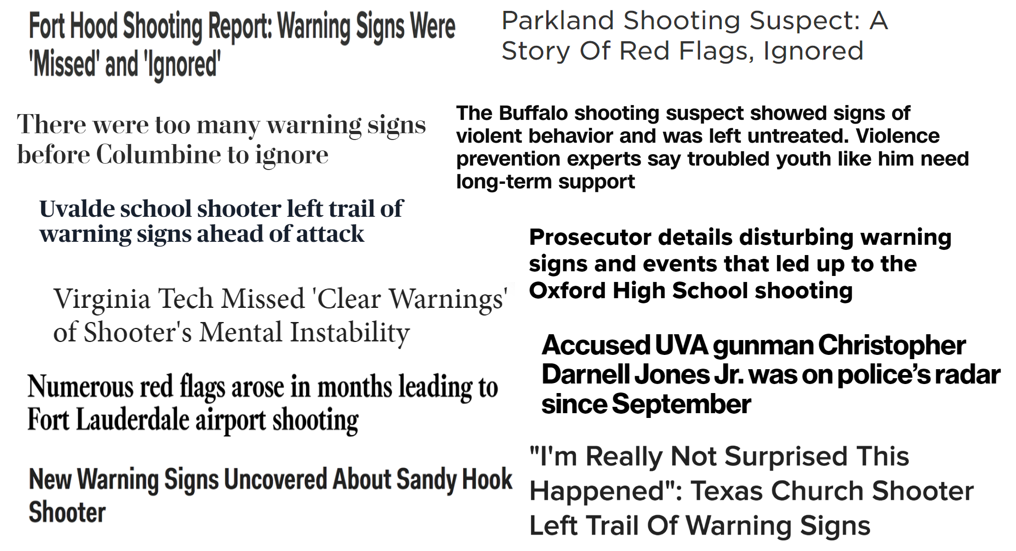
Do you know the most common excuse/reason cited after almost every tragedy? Most of us have heard it hundreds and hundreds of times.
“We failed to connect the dots.”
- After school attacks (Columbine, Sandy Hook, Parkland, Uvalde, Oxford, and numerous others).
- After terrorism attacks (9-11 Attacks, San Bernardino, Boston Marathon, and numerous others).
- After mass attacks (Virginia Tech, Orlando, El Paso, Las Vegas, Maine, and numerous others).
- After suicides, workplace violence, drug overdoses, hate crimes, and numerous other incidents.
“We failed to connect the dots” is the most common excuse/reason for failing to prevent preventable incidents. Why? Because it is extremely difficult to “connect the dots” when most schools, colleges, workplaces, and communities are not equipped and not empowered to effectively “connect the dots”.
To connect the dots, you have to collect all of the pre-incident indicator dots from all of the sources of dots and then immediately funnel and securely share them with the right resources/people who need to see all of the dots, assess all of the dots, and connect all of the dots to see the bigger picture so timely and appropriate intervention, disruption, and prevention actions can take place before the at-risk individuals/evil doers escalate to an incident or tragedy. It is important to note that at-risk individuals and evil doers almost always exhibit warning signs and pre-incident indicator dots before the incident occurs, and we know this is true from early adopters who are equipped to collect and connect the dots.
To collect all of the pre-incident indicator dots from all of the sources, funnel them, and securely share them with the right resources/people who need to see all the dots, you will need specialized tools that support:
- Anonymity
- Confidentiality
- Privacy Compliance
- Secure Information Sharing
- Access Rights/Need to Know
- Accountability
- Legal-Ready Documentation
- Audit-Ready Documentation
- Secure Accessibility
To collect all the dots from all of the sources, funnel them, and securely share them with the right resources/people who need the dots, the specialized tools and strategies will need to be able to collect dots from potentially thousands of siloed sources:
 Incident Reporting Silos
Incident Reporting Silos
- Incident Reporting Options Internal (hotline, web, email, app, text, chat, etc.)
- Incident Reporting Options External (see something say something, safe2____, etc.)
- Incident Reporting Law Enforcement (federal, state, local, units, crime stoppers, etc.)
- Incident Reporting Options Community (nonprofits, houses of worship, etc.)
- Incident Reporting Options Departments (HR, Security, Student Affairs, Legal, etc.)
- And numerous other incident reporting options/silos
People Silos
- Trusted Adults (could be hundreds or thousands of people)
- Counselors/Wellness Professionals
- Mental Health Professionals
- City/County Offices (attorney, juvenile justice, investigations, etc.)
- Social Workers (city, county, state, nonprofit, etc.)
- Child Protective Services (local, county, state, etc.)
- Family Members
- Friends
- Students
- Employees/Management
- Neighbors
- Ex-Family, Ex-Friends, Ex-Employees
- And numerous other people/silos
 System Silos
System Silos
- HR Systems
- EAP Systems
- Student Information Systems
- Security Systems
- Student Affairs Systems
- Legal Systems
- Risk Systems
- Law Enforcement Systems
- Mental Health Systems
- Healthcare Systems
- And numerous other Silo Systems
Social Media Silos
- Snapchat
- YouTube
- TikTok
- Twitter/X
- Discord
- 4Chan
- And HUNDREDS more siloed social media sites
Collecting AND Connecting the Dots is critical today to address significant challenges, increasing fears, and soaring liabilities. Take action now and connect with us at INFO@AWAREITY.COM so we can answer any of your questions, address your challenges, and send you the information you need.